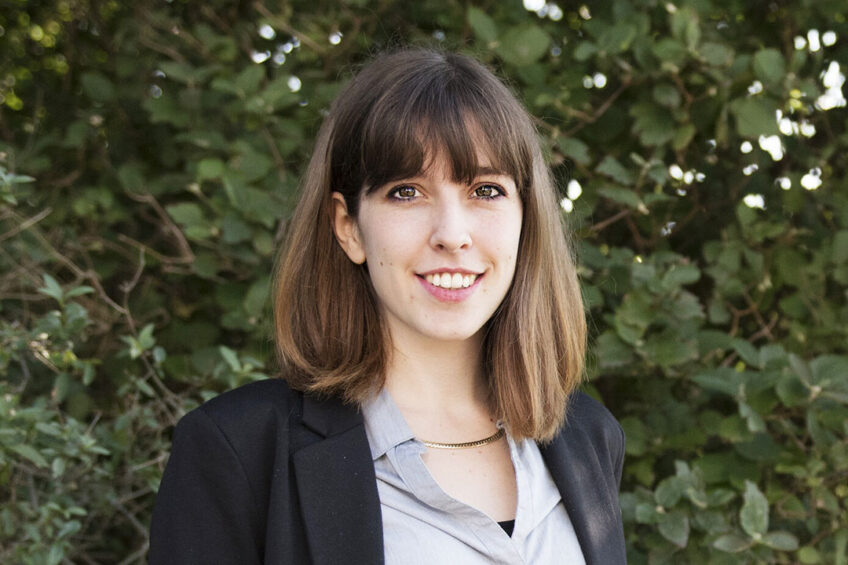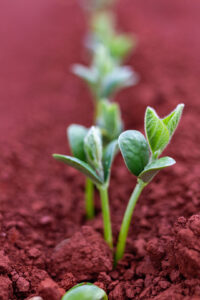Growing interest in Life Cycle Analysis in feed

The production of animal feed has a carbon footprint. But do we really know how big this footprint is? The Global Feed LCA Institute helps feed companies with the data they need to make a Life Cycle Analysis. The feed ingredient database will be updated in the first quarter of 2022.

Agriculture – like many other industries – has a responsibility to contribute to a more sustainable planet. The reduction of carbon emissions is one of the key ways to achieve this, as was recently addressed again at the UN Climate Change Conference (COP26). ). Carbon emissions lead to an increase in the average global temperate on Earth. At 1.5 degrees Celsius warming, 6% of insects, 8% of plants and 4% of vertebrates will see their climatically determined geographic range reduced by more than half. To be able to change processes and methods, companies need to know the impact of their products and actions. And this is where Life Cycle Analysis/Assessment (LCA) tools come in. An LCA allows you to calculate the emissions that are released throughout a product’s life cycle (i.e. from cradle to grave). Animal feed makes a major contribution to the total emissions of animal-based food production. Fuelled by the recently approved EU’s Farm-to-Fork strategy and associate mission to reduce greenhouse gas emissions from agriculture, it comes as no surprise that a growing number of EU feed companies have done − or plan to do − an LCA on their products.
Life Cycle Analysis: New and complex
The Global Feed LCA Institute (GFLI), founded in 2019 as a non-profit organisation, facilitates feed companies by offering a free and publicly accessible database containing the CO2-eq emissions and a wide variety of impact categories of different feed ingredients. The database now contains 962 datasets with 22 new datasets that are included separately on the GFLI website (these will be included in the database with the new database update in Q1 of 2022). Laura Nobel, project coordinator at Agribusiness Service and working for GFLI, explains: “LCA is a relatively new concept and moreover, it’s extremely complex. This is because for an LCA, many different considerations need to be taken into account to arrive at the final LCA calculation. Where do you draw the line, which indirect emissions do you include in the calculation and how much data is needed to be representative for the sector and/or region?”
Methodological compliance
GFLI uses a methodology that is based on the FAO-LEAP guidelines and aligned with the EU PEFCR Feed. The European Commission has proposed the PEFCR Feed as a common way of measuring environmental performance. The FAO-LEAP guidelines represent a significant milestone for the global feed industry in order to enable consistent and transparent reporting of environmental performance. The GFLI implemented the FAO/LEAP methodology and has established a working relationship with the LEAP Steering Committee to ensure methodological compliance. Both are publicly available calculation methods for lifecycle assessments for animal feed, created to ensure greater uniformity in LCA research. Together with a team of technical experts that regularly discuss and review the methodology, the GFLI aims to become the global reference for the feed industry.
We are happy to share our knowledge with more countries and feed companies in the near future to truly make GFLI the global reference for feed LCAs
2 assessment methods
When we talk about animal feed, an LCA consists of the primary production of the crop, such as wheat or maize, and the processing of that (co-)product. “The GFLI database contains data relating to primary production and processed feed ingredients. The processing steps (grinding, mixing, pelleting, etc.) in the feed mill itself and the transport from the GFLI database’s system boundary (which is the farm for primary products and the processing plant for processed products) to the feed mill are company-specific data that the feed manufacturers must include in the calculation themselves if they want to get a total picture of the LCA footprint of their compound feed,” Nobel explains. Users of the GFLI database can download the database for free from the website. “We get a lot of questions from feed companies about which sheet and what they should look at. The GFLI database has 2 impact assessment methods: the ReCiPe, which was the first formalised LCA method, and the EF, which is the EU PEF aligned method. There are also 3 allocation options included, where the emissions are allocated to either economic value, mass weight, or gross energy. Which one to use is up to the user and the decisions made in the industry about which are the ‘best’ choices.”
Effect of soil and land use
Within LCA, land use change is also taken into account (the conversion of a permanent piece of grassland into crop land or deforestation of land for the production of soy in the Amazon region in Brazil. Land use change has a huge impact and can be very unfavourable for a product’s LCA footprint. Nobel explains that the impact of feed production depends on many things: the region where you produce the feed, the type of soil used (some soils such as peatland can emit a lot of greenhouse gases when damaged) and climate.
Staying close to the market
The GFLI community currently entails 11 member companies (animal feed suppliers, feed additive companies, buyers and feed producers) and 7 associations, of which 5 are ‘founding members’. Membership has been open to anyone in the feed industry since the launch of the database in November 2020. Nobel: “We are very grateful for the companies that have signed up so far, as they are important for propagating our mission and vision. Our members are also the ones who are in direct contact with key stakeholders in the food chain (such as supermarkets). And all of these stakeholders have sustainability on their agenda. In the Netherlands for example, more initiatives are popping up with the idea to label food products with their environmental footprint. It would be great if they acknowledge GFLI when it comes to labelling animal-derived products and use our database for the feed emissions within their labelling system. Having the members allows us to invest in becoming better known and further enhances our database, for example by including more regional data.”
Growing worldwide
Nobel sees a growing interest in LCA in the animal feed industry. “But so far, the demand is mainly within the EU, which is being strongly influenced by the European regulations and demands to reduce greenhouse gas emissions. Certain countries, such as Great Britain, the Netherlands and Denmark, are on top of this when we look at the amount of contact they have with us and database downloads. The challenge is to gain more acceptance outside Europe and develop knowledge in this relatively new subject on a global scale. We are happy to share our knowledge with more countries and feed companies in the near future to truly make GFLI the global reference for feed LCAs,” Nobel concludes.











